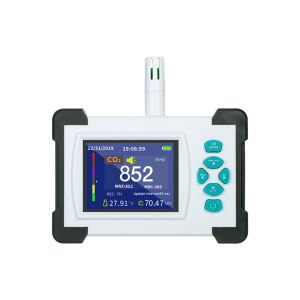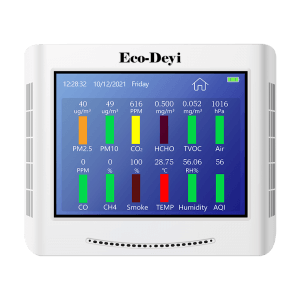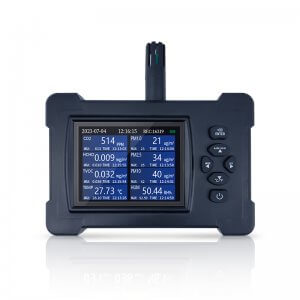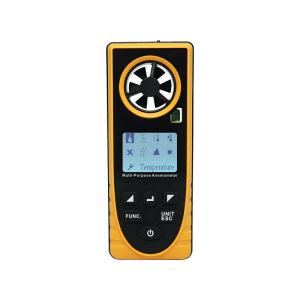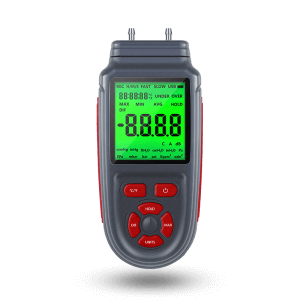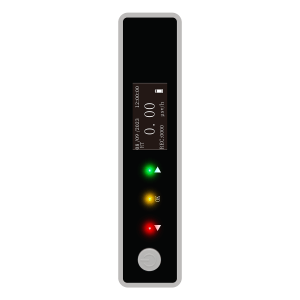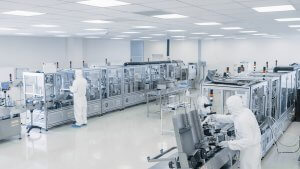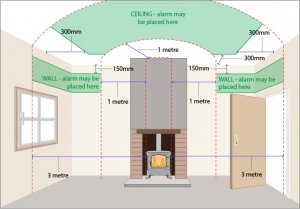How CO2 is Produced?
Carbon dioxide (CO2), naturally present in the atmosphere, is a molecule produced by the human body during respiration. Its concentration in indoor air depends on both human occupation and the level of air renewal.
In the context of Covid-19, quality indoor ventilation is of primary importance. Indeed, Sars-Cov-2 may spread via aerosols, i.e., microscopic droplets released when breathing and talking. These aerosols stay in the air for long periods of time, and they can travel more than 2 meters. A simple and effective way of reducing pollution from aerosols is effective ventilation. Ventilation is therefore the recommended precautionary measure of the WHO.
Carbon dioxide (CO2) is produced during the respiration of humans, and the quantity of CO2 present in the air indicates ventilation quality: high CO2 concentrations are associated with inadequate ventilation. The higher the level of CO2, the higher the potential virus load produced by its inhabitants. Therefore, measuring the concentration of CO2 is one way of improving the ventilation of the premises, by showing when ventilation is needed. It is a standard measure, now used in some modern buildings to monitor mechanical ventilation operations. The measurement, which is based on a chemical reaction, has been used since the 19th century in order to combat respiratory epidemics in unhealthy habitats. Furthermore, a high concentration of CO2 causes discomfort (headaches, reduced cognitive and physical performance, drowsiness, irritation of the throat and eyes) and can be harmful to health, leading to asthma, rhinitis, bronchitis, and allergies in particular.
CO2 measurement
The CO2 concentration of outdoor air is about 0.04 percent, commonly reported at 400 parts per million (ppm). This thus represents the “target” value that should be achieved. The link between the air quality of a room and the CO2 concentration is given by the following characteristic values:
- < 800 ppm: corresponds to excellent air quality according to standard NF EN 13779 and is recommended by the High Council for Public Health. This, therefore, constitutes a “target” value to be achieved.
- between 800 and 1000 ppm: corresponds to average air quality according to standard NF EN 13779
- between 1000 and 1500 ppm: corresponds to moderate air quality according to standard NF EN 13779. This corresponds to values that are too high in the Covid-19 context.
- > 1500 ppm: corresponds to low air quality according to standard NF EN 13779. This corresponds to values that are much too high in the Covid-19 context.
These thresholds are irrelevant for rooms where part of the air circulation is provided by a Hepa-type filtering device. These thresholds are given at a rate of approximately 400 to 420 parts per million of “open air,” which serves as the benchmark. This rate may increase to 500 ppm, or even 600 ppm, in major cities at pollution peak times. These higher values are typically measured during the morning hours.
The monitored thresholds must be adjusted for observed increases in “open-air” rates. For example, if the outdoor CO2 rate measured is 500 parts per million, then 100 parts per million would need to be added to all of the above-mentioned thresholds.
Outside of the context of COVID-19, measuring CO2 and controlling for air quality remains essential. Good ventilation lowers your risk for respiratory diseases. On the other hand, a CO2 concentration of more than 1000 parts per million results in (reversible) decreased cognitive function.
One of the best ways to monitor the CO2 level in your house is to use a CO2 meter (known as a CO2 detector), which alerts you when the co2 concentration reaches a dangerous level. You could install these CO2 measuring devices in your house, classroom or even greenhouse.


